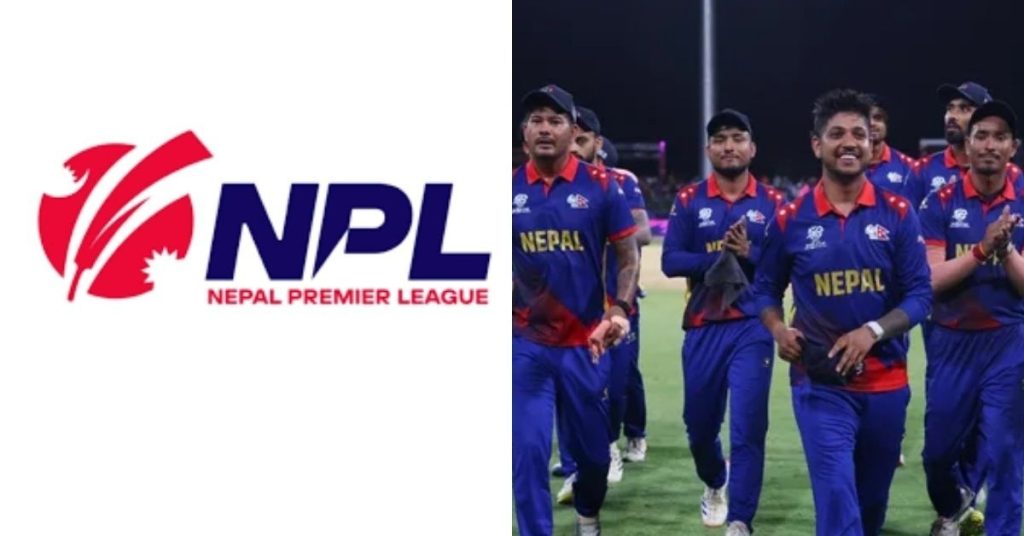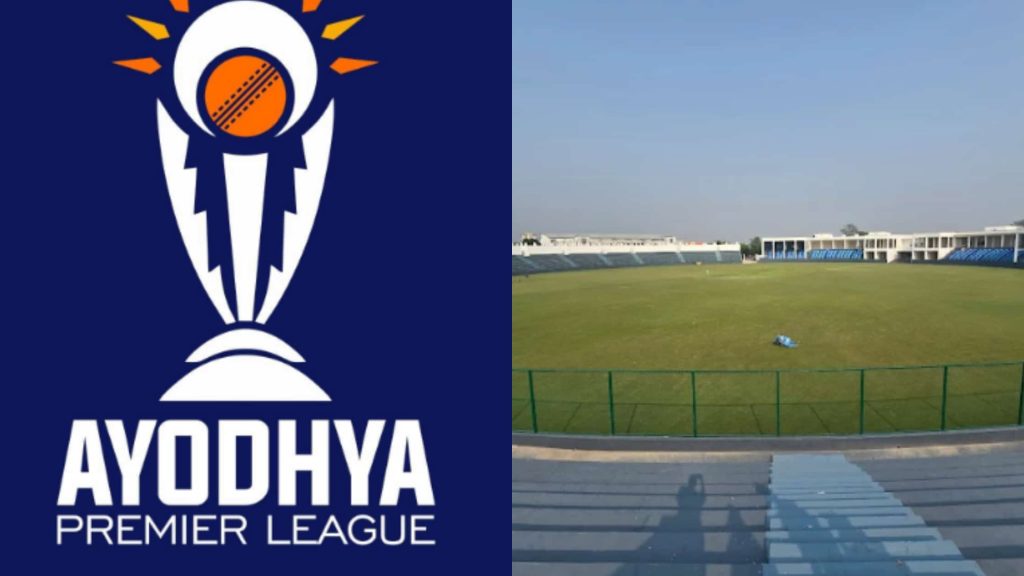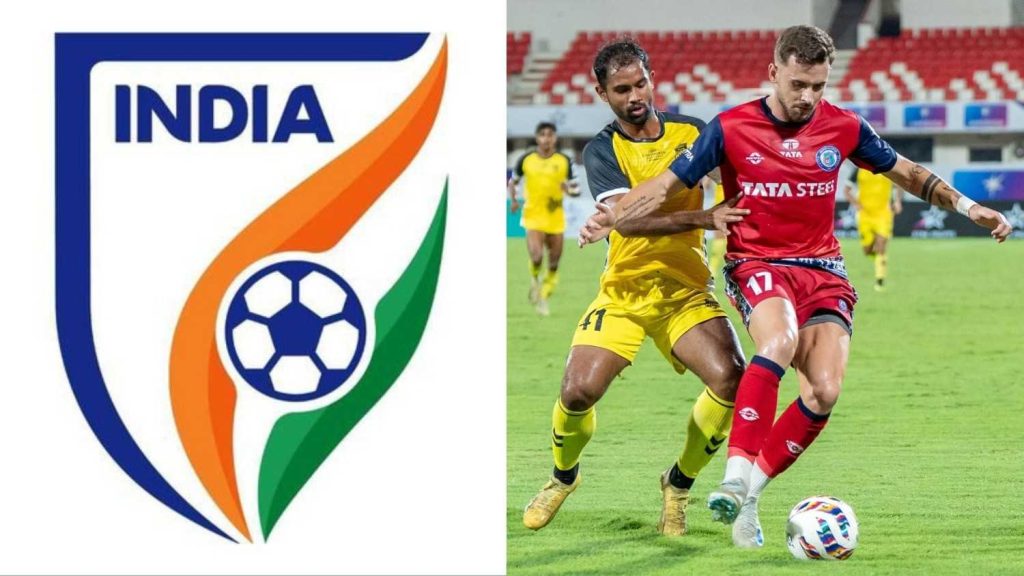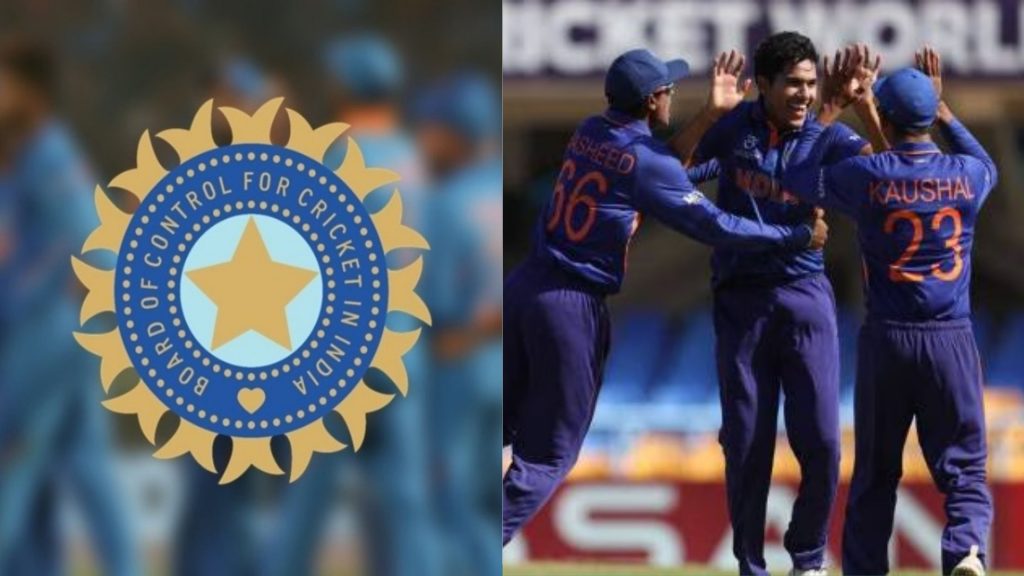The Vivekananda Yuba Bharati Krirangan, also known as Salt Lake Stadium, holds over 85,000 fans.
This makes it the largest football stadium in India and one of the biggest in Asia. But this isn’t just a massive structure of concrete and turf.
It’s where football breathes through the veins of Kolkata. It’s where East Bengal and Mohun Bagan face off in the legendary Kolkata Derby, shaking the very stands with noise and passion.
In this guide, we explore what makes Salt Lake iconic. We also compare it to India’s top football venues and some of the best in the world.
The Largest Football Stadium In India: Vivekananda Yuba Bharati Krirangan
The Salt Lake Stadium, officially known as Vivekananda Yuba Bharati Krirangan (VYBK), is a multi-purpose stadium located in Salt Lake City, Greater Kolkata, with a current capacity of 85,000 spectators.
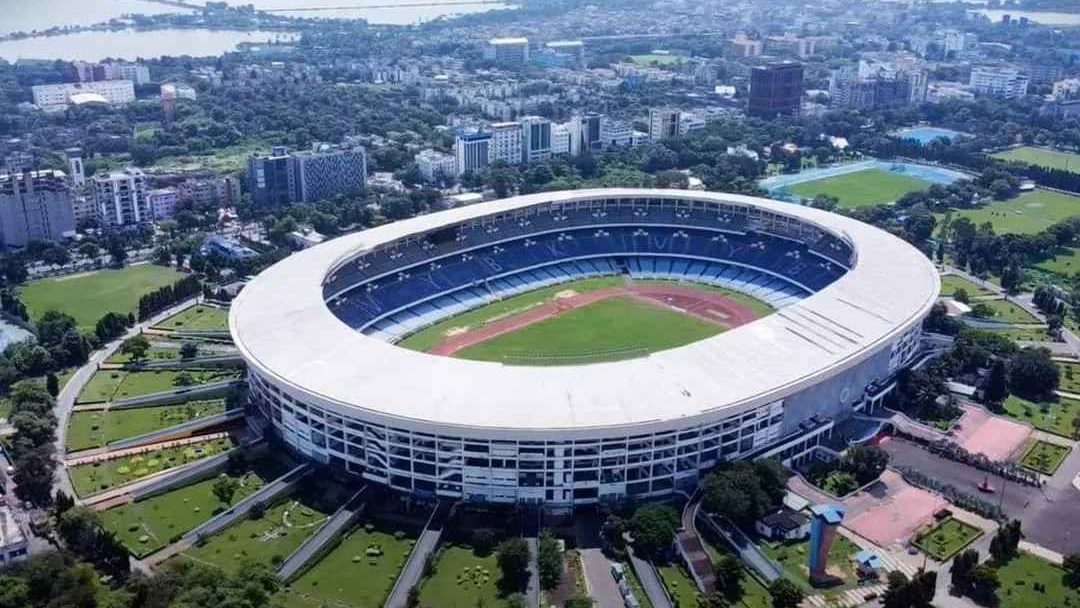
Named after Swami Vivekananda, this architectural marvel represents the pinnacle of Indian football infrastructure.
Key Details:
- Official Name: Vivekananda Yuba Bharati Krirangan
- Common Name: Salt Lake Stadium
- Location: Kolkata, West Bengal
- Current Capacity: 85,000
- Opened: 1984
- Major Renovation: 2011 (for FIFA standards)
Built in 1984, Salt Lake Stadium could hold 120,000 fans. It had three tiers and was the largest football stadium in the world until 1989.
In 2011, the venue underwent major renovations to meet FIFA regulations, reducing its capacity but greatly improving safety and the overall viewing experience.
Over the years, it has hosted numerous high-profile national and international matches, including the FIFA U-17 World Cup in 2017.
With its massive oval structure and distinctive design, Salt Lake remains one of the most iconic landmarks in Indian sports.
Top 10 Largest Football Stadiums In India
India’s football infrastructure showcases a diverse range of stadiums, each with unique characteristics and hosting capabilities that contribute to the nation’s growing football ecosystem.
| Rank | Stadium Name | City/State | Capacity | Home Teams |
|---|---|---|---|---|
| 1 | Vivekananda Yuba Bharati Krirangan (Salt Lake Stadium) | Kolkata, West Bengal | 85,000 | Mohun Bagan Super Giant, East Bengal FC |
| 2 | Jawaharlal Nehru Stadium | New Delhi | 60,254 | Punjab FC, India National Football Team |
| 3 | DY Patil Stadium | Navi Mumbai, Maharashtra | 55,000 | Occasionally hosts Mumbai City FC and various events |
| 4 | Greenfield International Stadium | Thiruvananthapuram, Kerala | 50,000 | Kerala Blasters FC (occasionally), India National Football Team |
| 5 | EMS Stadium | Kozhikode, Kerala | 50,000 | Gokulam Kerala FC |
| 6 | Jawaharlal Nehru Stadium | Kochi, Kerala | 41,000 | Kerala Blasters FC |
| 7 | Birsa Munda Football Stadium | Ranchi, Jharkhand | 40,000 | Jharkhand Football Team |
| 8 | Khuman Lampak Main Stadium | Imphal, Manipur | 35,285 | NEROCA FC, KLASA FC, TRAU FC |
| 9 | Dr Ambedkar Stadium | New Delhi | 35,000 | Delhi Football League, local tournaments |
| 10 | Indira Gandhi Athletic Stadium | Guwahati, Assam | 35,000 | NorthEast United FC |
The Vivekananda Yuba Bharati Krirangan in Kolkata is India’s largest football stadium. It holds 85,000 fans, making it the largest stadium in India and the 10th largest in the world.
Next are Delhi’s and Kerala’s Jawaharlal Nehru Stadiums. They are important football centres in their areas.
India’s Largest Football Stadiums – Detailed Analysis
India’s football stadium infrastructure represents decades of sporting development, featuring venues that blend traditional architecture with modern facilities to create world-class sporting experiences.
The rise of massive stadiums like Salt Lake Stadium reflects the steady growth of sports infrastructure in India, supporting both local talent and international events.
1. Vivekananda Yuba Bharati Krirangan (Salt Lake Stadium)
Salt Lake Stadium is the shining star of Indian football architecture. The stadium is named after Swami Vivekananda and is home to several football clubs.
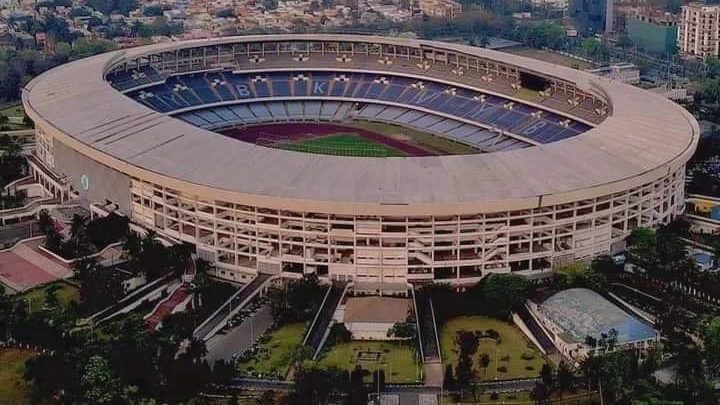
The most notable are East Bengal and Mohun Bagan. The venue has a three-tier setup and an elliptical shape. This design makes it challenging for visiting teams, yet offers great views for fans.
FIFA U-17 World Cup 2017, ISL Finals, Derby matches between East Bengal and Mohun Bagan, AFC Cup matches, and numerous international friendlies featuring the Indian national team.
2. Jawaharlal Nehru Stadium (New Delhi)
Jawaharlal Nehru Stadium is a key sports venue in New Delhi. It symbolises India’s growing football culture and athletic goals.
In 2010, renovations for the Commonwealth Games greatly upgraded the infrastructure.
This stadium stands out because it connects easily to the Delhi Metro. This makes it accessible and boosts attendance. It’s more than just football.
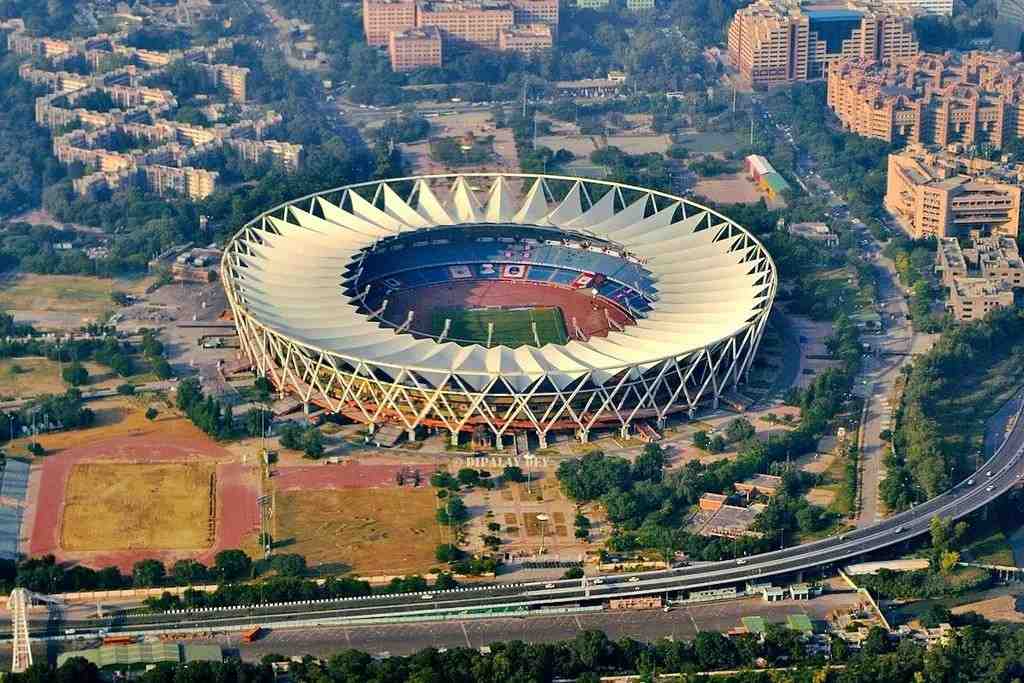
It also serves as a center for athletics. This place helps develop talent in many sports and hosts a variety of events.
Its role as a backup venue for the Indian national team shows how vital it is to the country’s football scene.
Jawaharlal Nehru Stadium blends heritage, accessibility, and modernity. This mix makes it key for sports growth in India’s capital region.
3. DY Patil Stadium
This state-of-the-art facility in Navi Mumbai represents modern stadium design with excellent amenities and infrastructure.
The stadium’s strategic location near Mumbai makes it accessible to football fans across the western region.
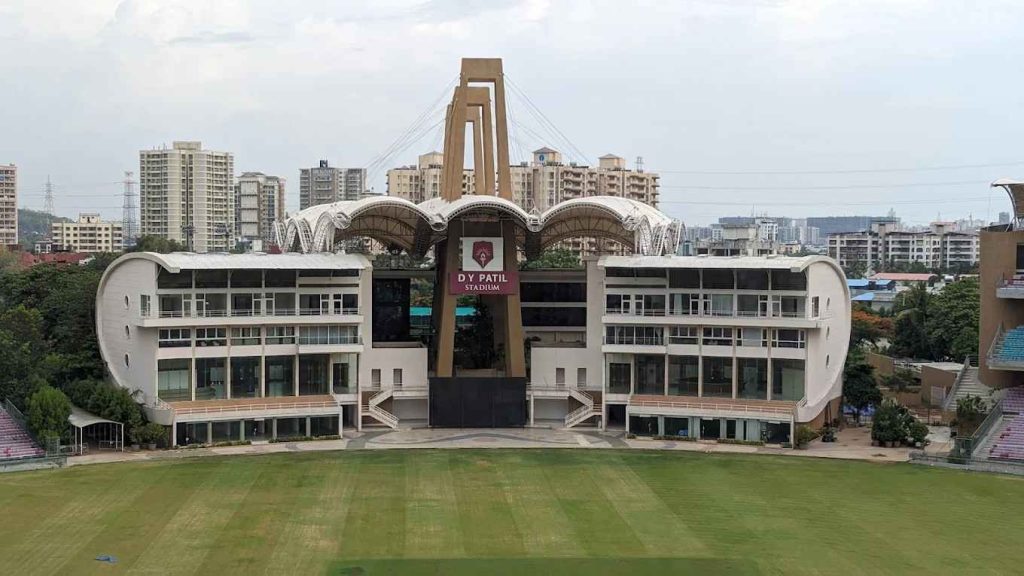
Features contemporary design, premium hospitality areas, advanced sound systems, and parking facilities for thousands of vehicles. The stadium also hosts various cultural and sporting events.
IPL matches, football tournaments, international exhibitions, and corporate events highlight its flexibility as a multipurpose venue
4. Greenfield International Stadium
Situated in Kerala’s capital, this stadium reflects the state’s passion for football. The venue combines traditional Kerala architectural elements with modern sporting facilities, creating a unique atmosphere for football matches.
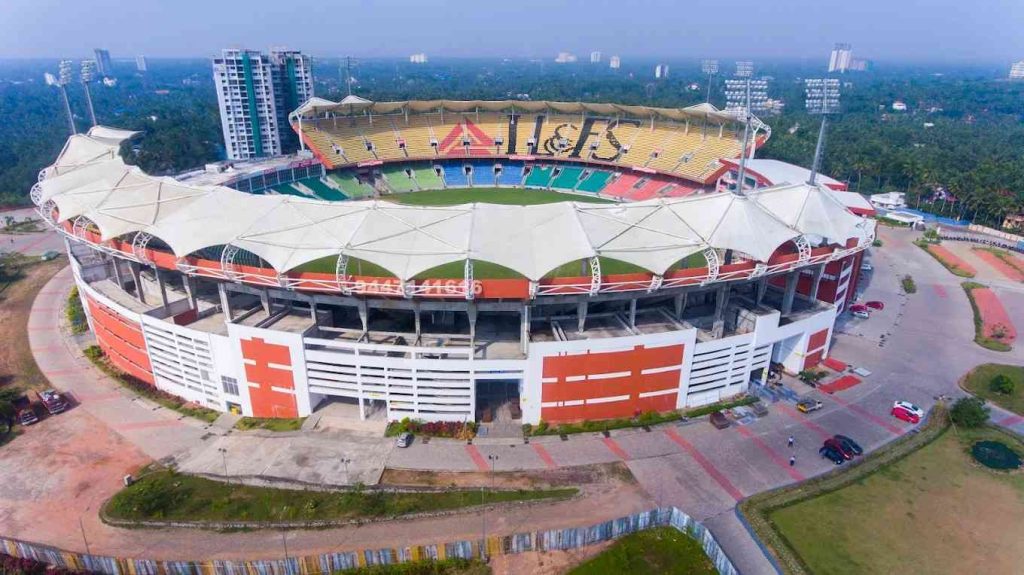
Built with international standards, featuring modern drainage systems, natural grass pitch, and comprehensive media facilities. The stadium’s design incorporates sustainable elements and local architectural influences.
FIFA U-17 World Cup 2017, Kerala Blasters matches, and international friendlies serves as a key venue for South Indian football development.
5. EMS Stadium
Located in Kozhikode, this stadium serves as a vital hub for football in northern Kerala. The venue’s intimate setting creates an electric atmosphere during local derbies and important matches.
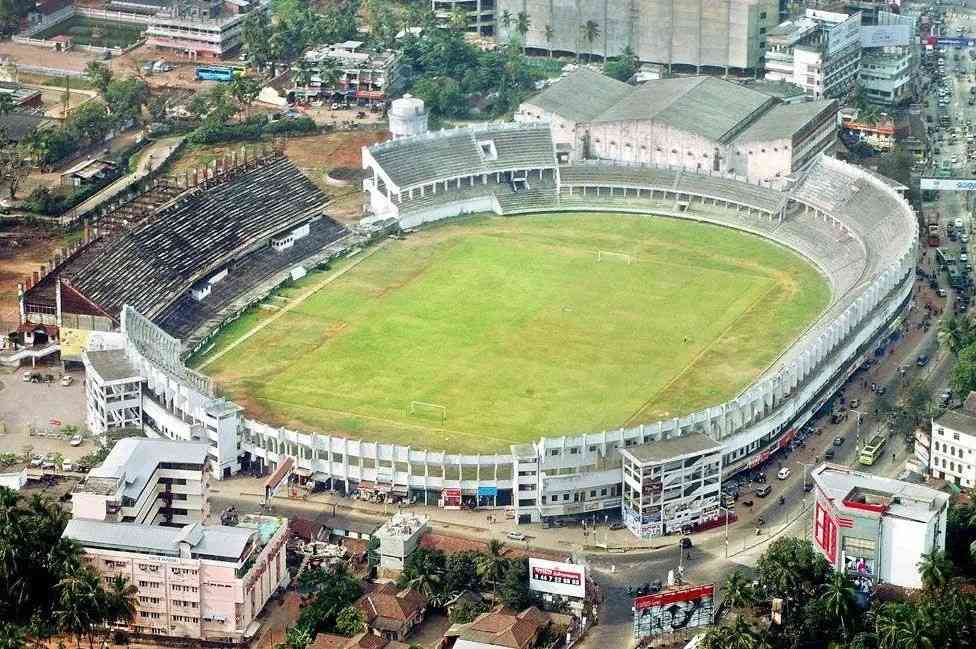
Features traditional stadium design with modern safety standards, quality floodlighting, and facilities that cater to both players and spectators. The stadium has undergone several upgrades over the years.
Gokulam Kerala FC home matches, local tournaments, youth development programs, and regional football competitions.
6. Jawaharlal Nehru Stadium (Kochi)
This stadium in Kochi stands as one of Kerala’s premier football venues, known for its passionate crowds and excellent playing conditions. The venue plays a crucial role in developing football talent in the region.
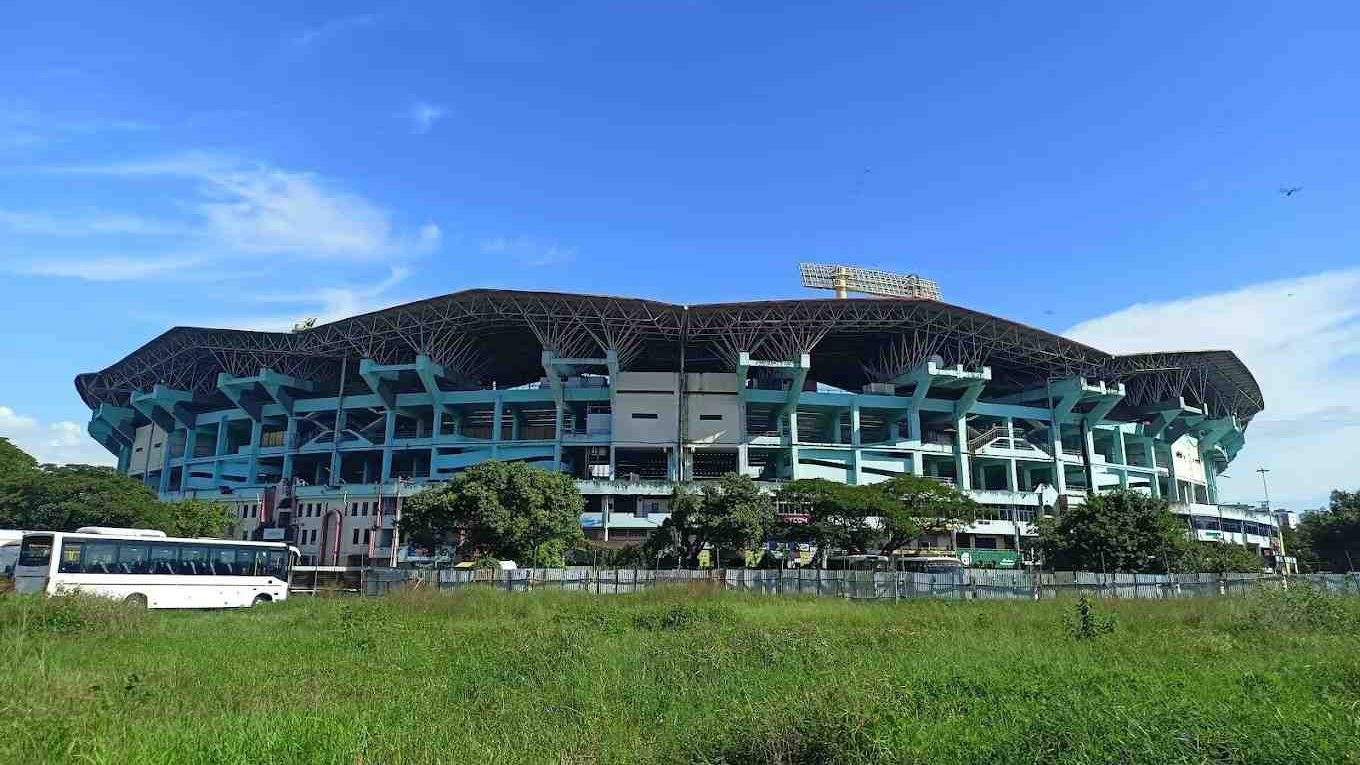
Modern facilities include quality pitch conditions, comprehensive drainage systems, media centres, and spectator amenities that meet international standards.
Kerala Blasters ISL matches, FIFA U-17 World Cup 2017, Santosh Trophy matches, and various youth tournaments contribute to Kerala’s football legacy.
7. Birsa Munda Football Stadium
Named after the tribal freedom fighter, this stadium in Ranchi represents football development in eastern India. The venue serves as a symbol of sporting progress in Jharkhand.
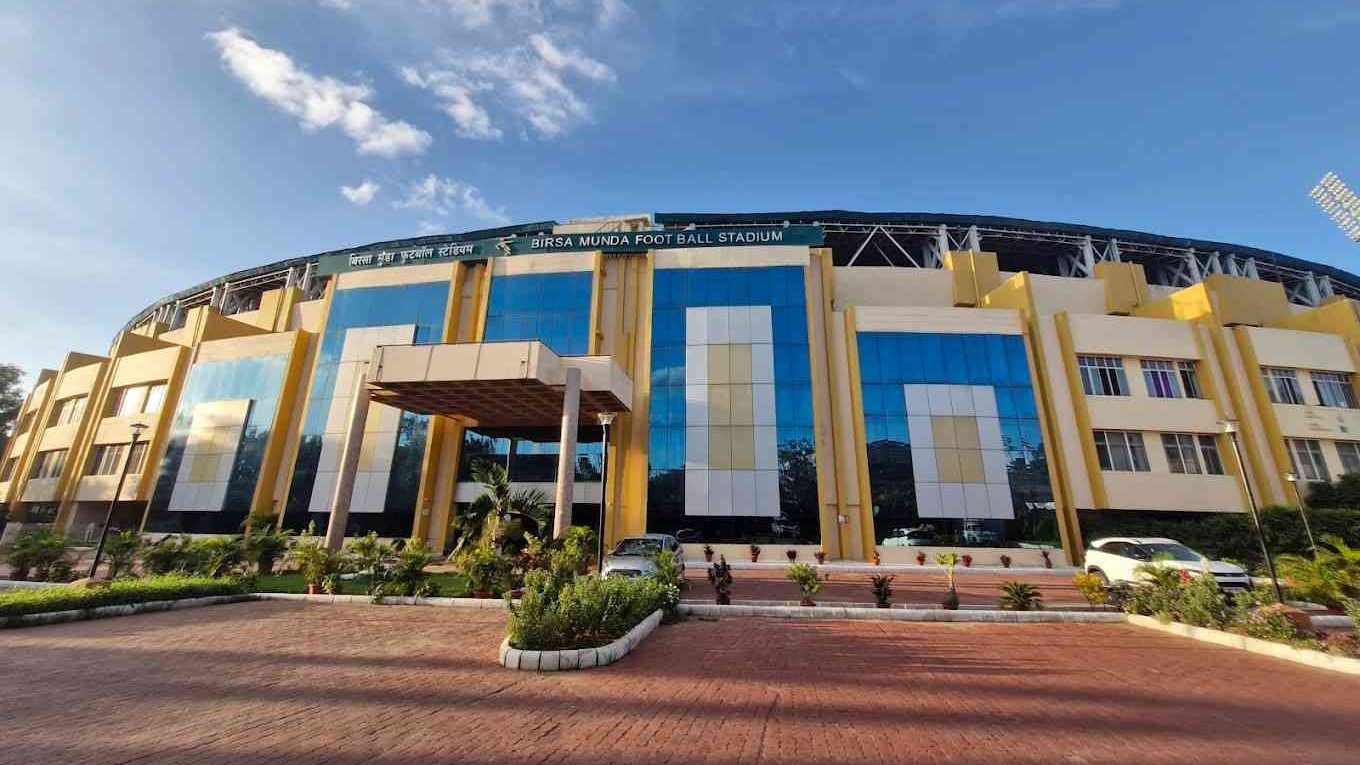
Features modern construction standards, quality playing surface, adequate lighting systems, and facilities designed to promote football at grassroots levels.
State-level tournaments, youth development programs, and local club competitions serve as a training ground for emerging football talent from the region.
8. Khuman Lampak Main Stadium
Located in Imphal, this stadium represents football passion in India’s northeastern region.
The venue plays a crucial role in developing football talent from Manipur, known for producing skilled players.
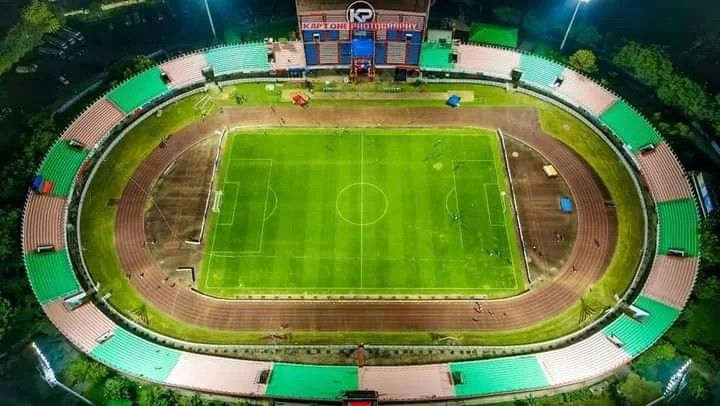
Traditional stadium design adapted to local conditions, featuring a natural grass pitch, basic but functional spectator areas, and facilities that serve the local football community effectively.
NEROCA FC matches, local tournaments, and youth competitions serve as a breeding ground for northeastern football talent.
9. Dr Ambedkar Stadium
Situated in Delhi, this stadium serves the capital’s football community with reliable infrastructure and accessibility. The venue plays an important role in grassroots football development.
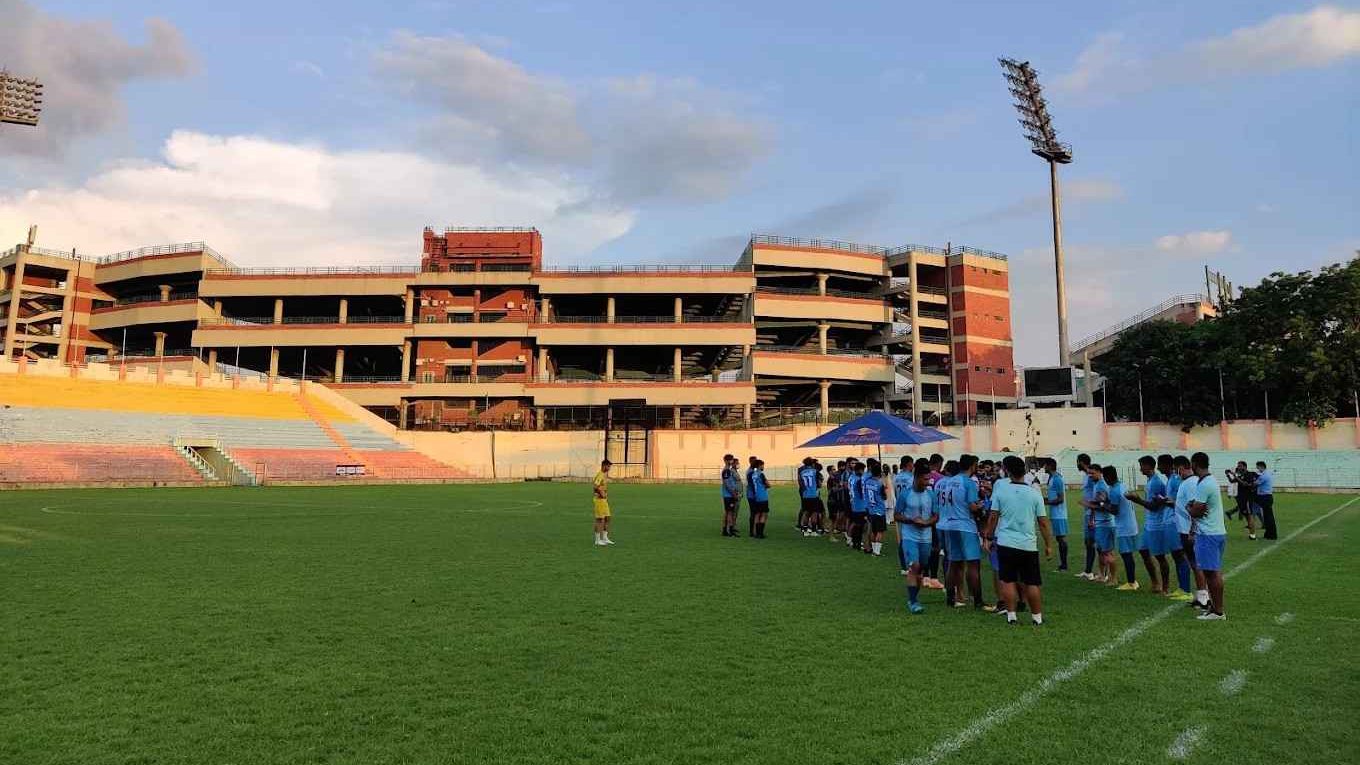
Functional design with emphasis on player development facilities, training areas, and spectator comfort. The stadium provides essential infrastructure for Delhi’s football ecosystem.
Delhi Football League matches, local tournaments, training camps, and community football programs that promote the sport at grassroots levels.
10. Indira Gandhi Athletic Stadium
Located in Guwahati, this multi-purpose stadium serves as northeastern India’s premier football venue. The stadium contributes significantly to regional football development and hosts major tournaments.
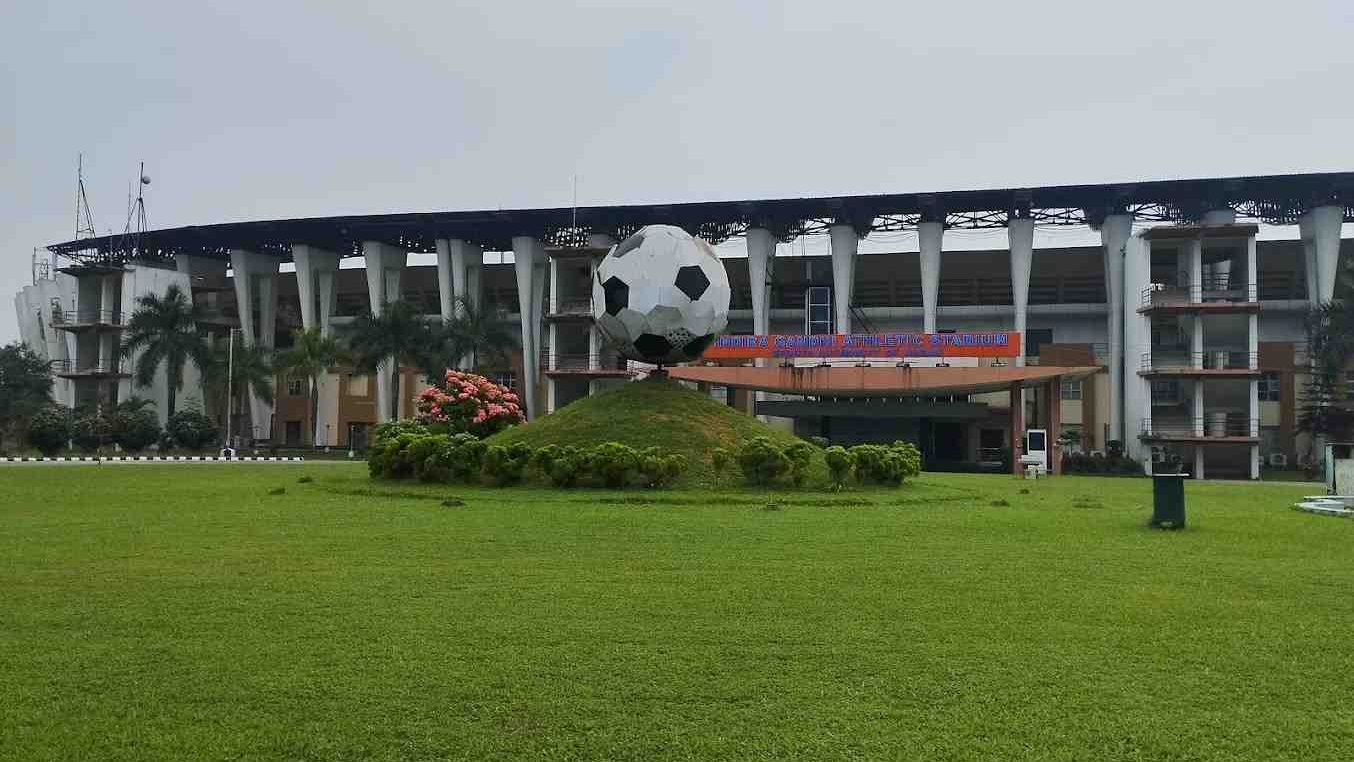
Multi-purpose design accommodating both football and athletics, modern facilities, quality pitch maintenance, and spectator amenities that meet regional sporting needs.
NorthEast United FC matches, regional tournaments, and athletic competitions and serve as a key venue for promoting sports in India’s northeastern states.
Related Reads:
Conclusion: The Vivekananda Yuba Bharati Krirangan (Salt Lake Stadium) In Kolkata Is India’s Largest Football Stadium With A 85,000 Capacity!
India’s football scene has many stadiums. The Salt Lake Stadium in Kolkata is huge. Key regional venues include Jawaharlal Nehru Stadium in Delhi and Greenfield Stadium in Kerala.
Each has a special role. They support domestic leagues, international matches, and grassroots development. Together, they reflect the growing infrastructure and passion for the sport across the country.
Check out the full list of India’s biggest football stadiums. You can explore their capacities, locations, and the teams that play there.
FAQs
Originally 120,000 capacity, reduced to 85,000 after 2011 renovations for safety and FIFA standards.
Salt Lake Stadium hosted FIFA U-17 World Cup matches in 2017, India’s first FIFA tournament.
Mohun Bagan Super Giant and East Bengal FC use Salt Lake Stadium for ISL home matches.
Built in 1984, underwent major FIFA-standard renovations in 2011 for improved facilities and safety.
Athletics events, cultural programs, concerts, and sporting competitions make it a versatile multi-purpose venue.


